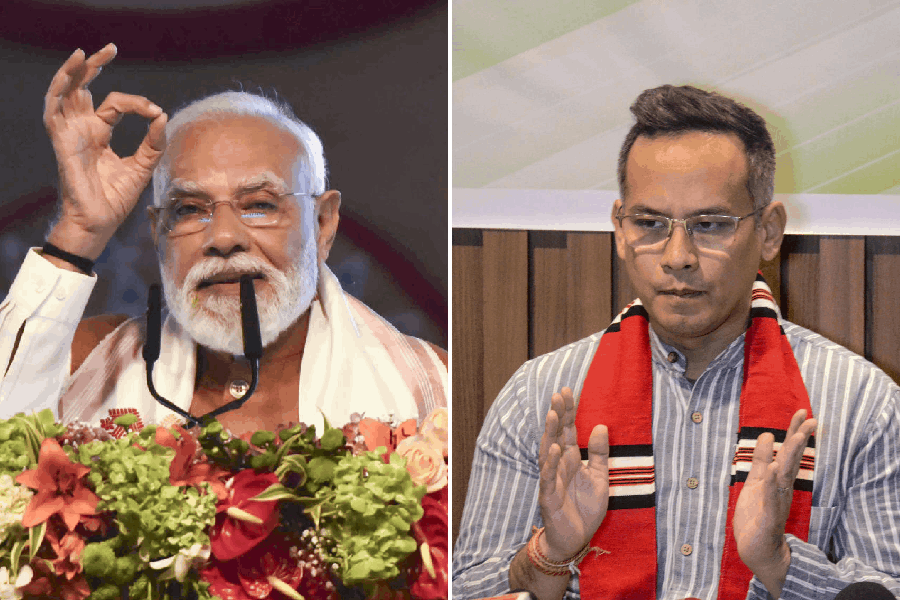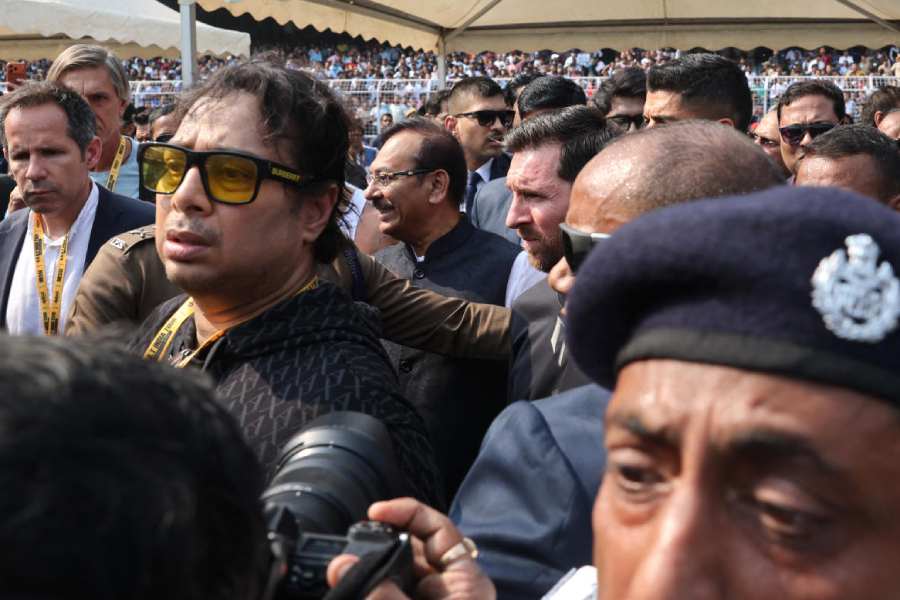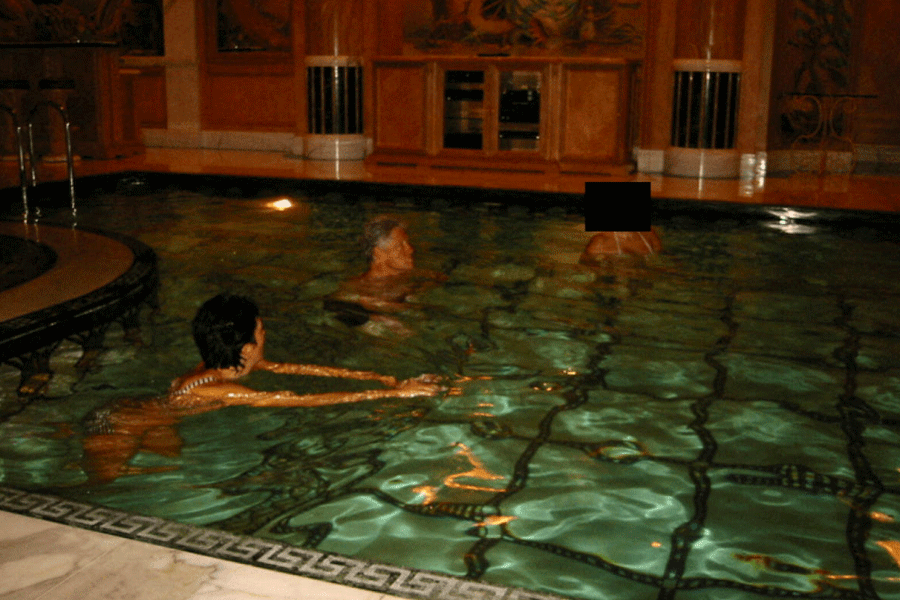 |
The leafy enclave of Malabar Hills — one of the most sought after addresses in the country — is at war. For more than two years now, the tony Mumbai neighbourhood has been the nerve centre of a struggle.
The fight — led by the city’s movers and shakers, including Bollywood actress Juhi Chawla — is against an enemy that can’t be seen or heard: radiation from powerful antennae set up on mobile phone towers.
The citizens hold that long-term exposure to electromagnetic frequency (EMF) radiation could trigger several health problems — including severe forms of brain cancer. Not so, says the country’s Rs 3,40,000-crore mobile phone industry.
Jaipur-based jeweller Sudhir Kasliwal is among those campaigning against mobile tower radiation. “My two brothers were detected with brain tumour. One died last November,” says Kasliwal, who holds that the radiation from three mobile phone towers five metres from his boundary wall was the cause of death.
With citizens across the country raising an alarm, the government has stepped in. In September, it mandated lower radiation levels. “We have reduced the radiation limit from mobile phones and mobile towers as a precautionary measure. We are planning to conduct our own studies to ascertain the safety of radiation from cell phone towers,” says P.K. Panigrahi, senior deputy director general of the government’s department of telecommunications (DoT).
The telecom industry stresses that while the new guidelines are “not warranted”, it has agreed to comply with them. “This was done in good faith and (as) an attempt to work with the government to address the political and public pressure from certain quarters, which had raised unverified charges of increased health hazards from mobile phone towers,” says Rajan S. Mathews, director general, Cellular Operators Association of India (COAI), which represents the interests of the global system for mobile (GSM) telecom service companies.
 |
The campaign against radiation started a few years ago, but has now picked up momentum. “I have never seen clusters like these anywhere else in the world,” says Juhi Chawla, who has sent a spate of letters to the Centre — the last on October 26. “The antennae are put up like flowers in a flowerpot,” adds another resident, Prakash R. Munshi, who together with Chawla managed to get 13 mobile towers on the Sahyadri state guest house in Malabar Hills (opposite Chawla’s house) removed as they lacked legal permission.
India, with 91 crore cell phone connections, has the highest number of connections in the world after China. It first adopted safety guidelines for mobile radiation, recommended by the Germany-based International Commission for Non-Ionising Radiation Protection (ICNIRP), in 2008. The guidelines limited the transmitted power of mobile antennae to 4.5 Watt (W) per square metre for towers with 900 MHz (megahertz) bandwidth and 9.2W per square metre for 1800 MHz.
The campaign prompted the central government to set up an inter-ministerial committee (IMC) in 2010 to look into radiation from mobile towers as well as mobile phones. The IMC, in its report submitted in April last year, proposed that the transmitted power of antennae be reduced by 90 per cent. The new guidelines came into effect from September 1 this year.
There are approximately 5 lakh towers in India. Mathew says that out of these, 97 per cent has complied with the revised guidelines. The rest need to be relocated at a cost of Rs 25 lakh per tower, he adds.
India’s mobile towers are owned by companies like Indus Towers, a three-way venture among the Bharti group, Vodafone and Aditya Birla Telecom, and Viom, a joint venture between Quippo Telecom, owned by the Calcutta-based Srei Group, and Tata Teleservices. According to the Indus Towers website, it has 1,09,000 towers in India, making it the world’s biggest mobile tower owner. Neither Indus Towers or Viom was available for comment.
But the campaigners are still not happy. “It is all eyewash. The common people think that the mobile operators have reduced the transmitter power to one-tenth of the earlier limit. They have only reduced the limits on paper,” says Girish Kumar, professor of electrical engineering at the Indian Institute of Technology, Bombay.
Kumar, an expert on antenna technologies, has been at the forefront of the campaign as he himself claims to be a victim of radiation that he was exposed to while working in his lab. He has a company that manufactures products to counter radiation — which prompted the telecom industry to dub him an “interested” party. Kumar, however, stresses that he thought of the products only because of rising concerns over radiation.
Some experts hold that the reduced radiation levels from mobile towers will be still harmful to people living around the towers. Most towers have anyway been operating at the level now stipulated and have still raised health concerns.
“Our study had shown that most Indian mobile towers operate at much less levels of power than the ICNIRP norms,” says P.R. Goundan, researcher at the Centre for Excellence in Wireless Technology in Chennai, who was part of a COAI-sponsored study that studied power levels of towers in four metros in 2010.
The location of mobile towers falls in the ambit of the states (some like Rajasthan and Madhya Pradesh have a telecom tower policy), but the DoT has issued guidelines which state governments or local bodies are supposed to follow. According to DoT’s guidelines, the distance between a tower and a nearby building should range from 35 metres for a tower with two antennae to 75 metres for towers with 12 antennae. This is often violated, claims Kasliwal whose house is just five metres from the tower.
Antennae are mushrooming unchecked because leasing rooftops and sidewalls of buildings has become a source of easy money (the monthly rent for each antenna is about Rs 1 lakh) for property owners and housing societies. “Mobile tower operators say only those who live opposite the tower will face a little risk whereas there is no harm to those who live in the building where the tower is installed. But while others will be affected, the ones who live in the building will certainly suffer because they are the closest to the antennae,” says Kumar.
The issue has now also become a bone of contention between the government and the judiciary. Kesliwal points out that in Jaipur, after campaigners through the Right to Information Act found that many towers did not have permission to operate, the Rajasthan High Court ordered that towers be removed from the vicinity of schools and hospitals.
Last month, the telecommunication ministry sent a letter to the state government voicing concern over the removal of towers, which it said would affect connectivity. Last week, the court pointed out that the Central government’s position was tantamount to contempt of court. The ministry promptly withdrew the letter.
However, scientific studies so far have been inconclusive on the subject. “While animal studies have shown that radiation can disrupt living cells, there haven’t been enough studies to prove the harmful effects of EMF radiation on humans,” says R.S. Sharma, deputy director general of the Indian Council of Medical Research, who, along with Panigarhi, was a member of the IMC.
But, adds Sharma, “Indians are at greater risk than their Caucasian counterparts because of their thinner frames and lower muscle mass density.”
“Whatever evidence we have today doesn’t definitively show that radiation from mobile towers can cause cancer. Some reports suggest it can cause irritability and mood disturbances, but even these have not been scientifically validated,” says Anusheel Munshi, a radiation oncologist at Fortis Hospital at Gurgaon.
That said, some countries such as France and Austria which have conducted studies on radiation levels from mobile towers have drastically reduced the limits. The city of Paris has set 0.1W per square metre as the maximum exposure limit. And Austria, with 0.001W per square metre, has the lowest radiation exposure limit in the world. This came in the wake of a study by a team of researchers from the Medical University of Vienna in 2005 which found that exposure to the then recommended levels of radiation of 0.004W per square metre (which is 200 times lower than India’s revised limits) caused sleep problems and mild cognitive impairments in people living near mobile towers.
The effects of radiation will become clear over the years as some ongoing studies reach their conclusions. Sharma has also embarked on a study with researchers from the All India Institute of Medical Sciences, New Delhi. “We have already enrolled 600 volunteers. This is going to be a study of five years or more,” he says.
Recently, Prime Minister Manmohan Singh directed the department of science and technology (DST) to constitute an expert group to facilitate more scientific studies on the issue. “Proposals will soon be invited from Indian researchers,” says S.S. Kohli, a DST scientist and member of the expert group.
Some in the telecom industry believe that it needs to change. “There is resistance to change (among Indian cellular operators) and to adopt the best practices available globally with alternative low-powered deployment architecture,” says an industry expert who doesn’t want to be named.
The problem, however, is that the huge expansion of the mobile phone industry demands an increase in the number of towers and networks. Most companies meet this demand by increasing the number of antennae on an existing tower.
“But other options are available,” the expert says. “They can distribute the network across the area by setting up smaller towers with low power which are considered safe.”
If they do so, the residents of Malabar Hills — and in many parts of the country where towers loom — will rest easy. Till then, the air is fraught with tension and contention.
HELP AT HAND
If you think that a mobile tower near your house has radiation above the permissible level, where can you complain?
The DoT’s Telecom Enforcement Resource & Monitoring (TERM) cell, present in every telecom circles. Recently, the DoT also hired the public sector Telecommunications Consultants of India Limited to carry out such tests. Anybody who thinks the cell tower near his residence is emitting more radiation than permitted can request a test by paying Rs 4,000. “We inspected the radiation levels of 160 cell phone towers in 2012. Of these, 8 to 10 were on the basis of people’s complaints,” says A. Ghosh, who heads the TERM cell in Calcutta.
Additional reporting by Velly Thevar in Mumbai











